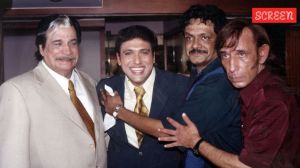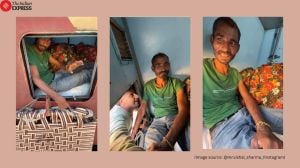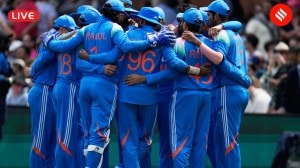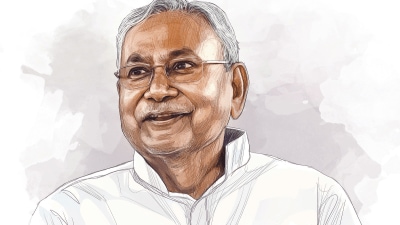Know Your City: How Baroda’s bronze statues will regain their black sheen in Rs 1.10 crore restoration project
The Vadodara Municipal Corporation will restore 15 bronze statues with the help of Indira Gandhi National Centre for the Arts.
 A statue of Sayajirao Gaekwad III outside the Vadodara railway station. (Express Photo)
A statue of Sayajirao Gaekwad III outside the Vadodara railway station. (Express Photo)The Vadodara Municipal Corporation (VMC) has undertaken a monumental job of restoring bronze statues across the city that are a tangible testimony of the glorious past of the erstwhile Baroda state as well as the rich history and culture witnessed by Vadodara over the years.
On Saturday, the Standing Committee of the VMC approved a proposal to restore 15 bronze statues across the city that have undergone patination and corrosion due to exposure to pollution and other environmental factors.
The decision to restore the 15 statues comes a year after the civic body, with the help of Indira Gandhi National Centre for the Arts (IGNCA), began the restoration of three iconic bronze statues in the city — the landmark Kala Ghoda statue of Maharaja Sayajirao Gaekwad III riding his Kathiyawadi hybrid horse, a statue of Yuvraj Fatehsinhrao Gaekwad at the intersection of Jail Road and Vinoba Bhave Road as well as a statue of Chhatrapati Shivaji Maharaj inside the Sayaji Baug garden. In January this year, the VMC ‘inaugurated’ the restored Kala Ghoda statue, which has regained its lost black sheen, while the work on the other two statues is nearing its completion.
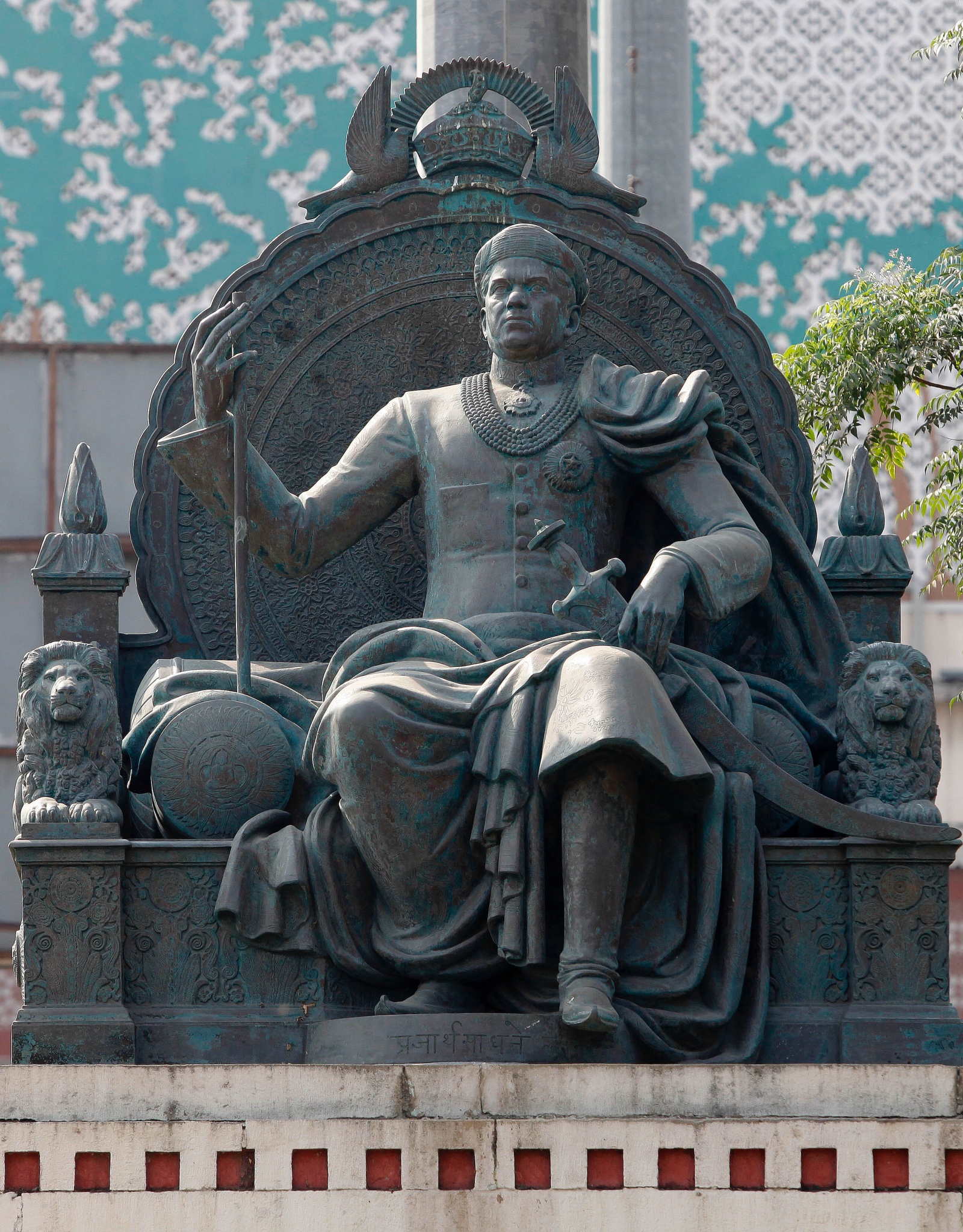 A statue of Sayajirao Gaekwad III outside the Vadodara railway station. (Express Photo)
A statue of Sayajirao Gaekwad III outside the Vadodara railway station. (Express Photo)
The latest proposal of the VMC has roped in the IGNCA to restore 15 statues for Rs 1.10 crore. These include the Mahatma Gandhi statue at Gandhi Nagar Gruh, a statue of Buddha at Jubileebaug, Maharana Pratap in Fatehgunj, a statue of Sayajirao Gaekwad III outside the Vadodara railway station as well as the Hunting Boys from Dhari– a statue of two boys, Arjan Koli and Hari Koli, from Dhari in Amreli, located inside the Sayaji Baug garden, as a tribute by Maharaja Sayajirao III for saving his life from a lion during a hunting expedition in 1933.
The Maharana Pratap statue was installed in 2008 at Fatehgunj Circle and has the Rajput king riding his favourite horse, Chetak. While the now-restored statue of Sayajirao III at Kala Ghoda was installed in 1907 to celebrate the silver jubilee of the king’s coronation, the statue of the Maharaja sitting on his throne at Hirak Baug, outside the Vadodara railway station, was unveiled in 1936 and is sculpted by Parisian artist Louis Berthoud at Rs 80,000.
 Kala Ghoda statue of Maharaja Sayajirao Gaekwad III riding his Kathiyawadi hybrid horse. (Express Photo)
Kala Ghoda statue of Maharaja Sayajirao Gaekwad III riding his Kathiyawadi hybrid horse. (Express Photo)
The Buddha statue in the centre of the landscaped Jubilee baug garden in the busy Raopura area of the city was unveiled by Maharaja Sayajirao III himself in 1912 to celebrate the 25th anniversary of his reign. Inspired by the Big Buddha statue in Kamakura in Japan, the statue was crafted in Japan and shipped to Vadodara. The Buddha statue was designed by Osao Watanabe and casted by Sessei Okazaki.
While patination is a natural process of a layer of colour forming upon the surface of bronze and copper sculptures, over the years, experts at the IGNCA have said that ‘corrosion’ is a concern that needs to be taken care of. Senior specialist consultant Sanjay Dhar told The Indian Express that the Vadodara statues are showing signs of corrosion due to their exposure to pollution.
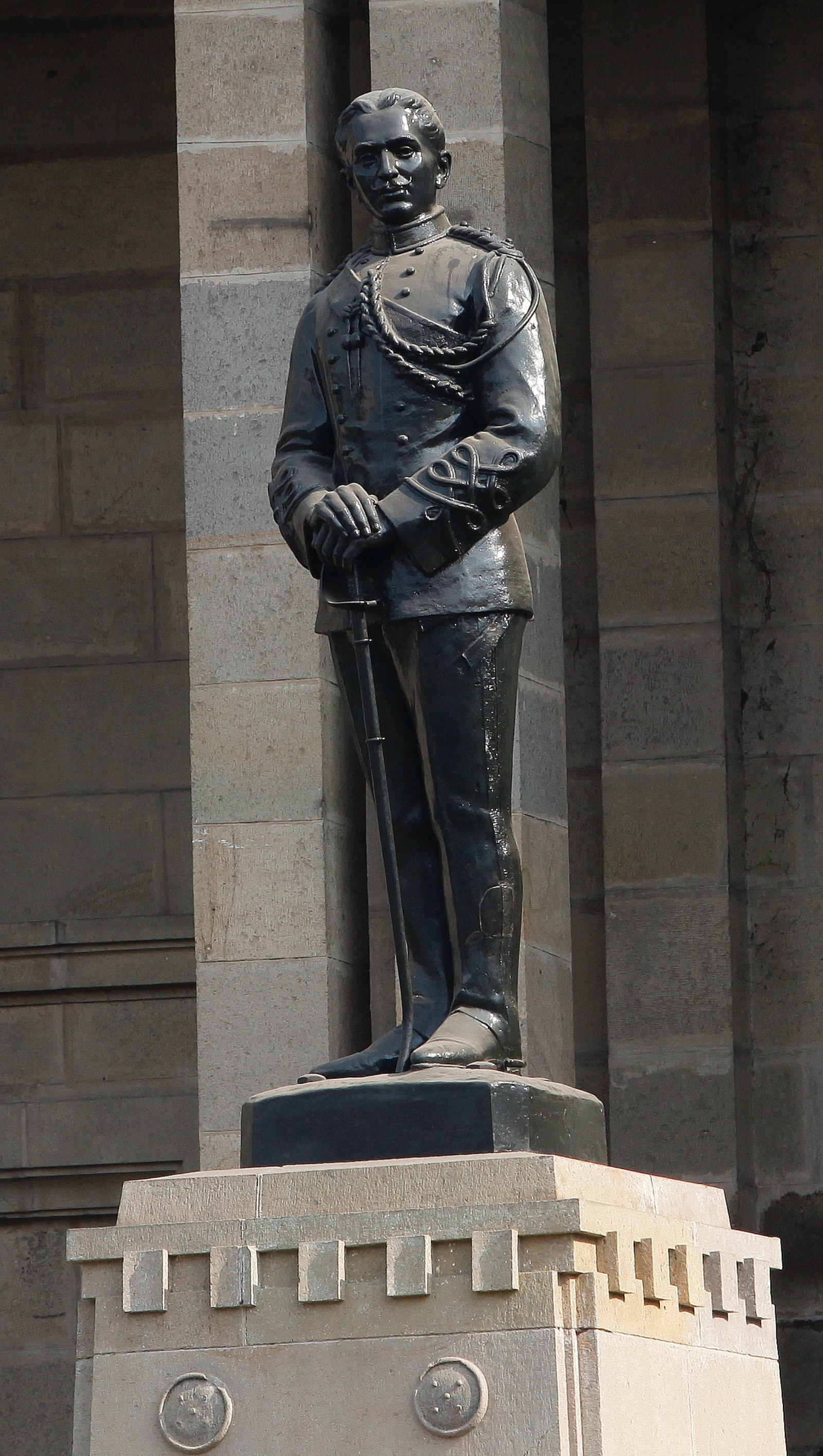 A statue of Yuvraj Fatehsinhrao Gaekwad at the intersection of Jail Road and Vinoba Bhave Road. (Express Photo)
A statue of Yuvraj Fatehsinhrao Gaekwad at the intersection of Jail Road and Vinoba Bhave Road. (Express Photo)
Dhar said, “Patination is of two types — benign and corrosive. If it is a benign patina that forms over a statue, then it can be left alone with the colour change over the years. However, when the patina is not desirable and causing corrosion too, there is a need to restore and repair the statues…”
The IGNCA has undertaken a deep study of the statues before deciding on the restoration treatment. Assistant conservator, IGNCA, Moobin Mansoori said the IGNCA also sought the assistance of the National Metallurgical Laboratory from Jamshedpur to conduct the scientific analysis of the extent of damage to the bronzes.
 A statue of Chhatrapati Shivaji Maharaj inside the Sayaji Baug garden. (Express Photo)
A statue of Chhatrapati Shivaji Maharaj inside the Sayaji Baug garden. (Express Photo)
Mansoori said, “The documentation, scientific analysis as well as elemental analysis is crucial. The NML Jamshedpur also brought an X-ray Fluorescence Spectrometer (XRF) machine to conduct the analysis, after which we undertook microscopic documentation of the nature of the original patina and the corrosion product… The detailed analysis helped determine safety parameters and finalise the treatment.”
Mansoori explained that restoring bronze statues first requires the removal of corrosion mechanically as far as possible. “Before using a solvent, we remove the corrosion using wooden tools mechanically… Thereafter, the sculpture is degreased and prepared for repatination. A traditional and natural patination product is used, and a final protective coating is added to form a barrier to protect the sculpture against moisture and other external factors… One of the unique features of the statues in Vadodara is that they are artistically sculpted. We will follow the same process for the restorations.”
Mansoori added that the statue of Chhatrapati Shivaji Maharaj, which was unveiled by Maharaja Sayajirao III in 1934 inside Sayajibaug, was the most challenging to restore due to its size. The statue, sculpted by eminent Bombay-based artist Ganpatrao Kashinath Mhatre, was originally intended for a memorial in Pune in Maharashtra. Still, when Mhatre’s creation was reportedly rejected due to differences, Maharaja Sayajirao III acquired the statue of Mhatre and installed it at Sayaji Baug as a tribute to Chhatrapati Shivaji, the founder of the Maratha Empire.
While the VMC proposal cites an assurance from IGNCA of “ten years durability” of the restoration as well as a “three years supervision and maintenance” to be done by IGNCA for ‘nominal costs’, five officials of the civic body are also attending a training course offered by the IGNCA to understand the Standard Operating Procedure (SOPs) to be handed out by the government-funded arts organisation to maintain the bronzes and execute timely treatment as and when needed.
For now, the IGNCA is planning the schedule to complete the massive restoration drive, especially since each restoration takes about three months. Mansoori says, “We intend to start work on the 15 statues soon. We are readying a team and planning the schedule to work on as many simultaneously as possible. If things go as per schedule, we may be able to complete the process in under three months.”



